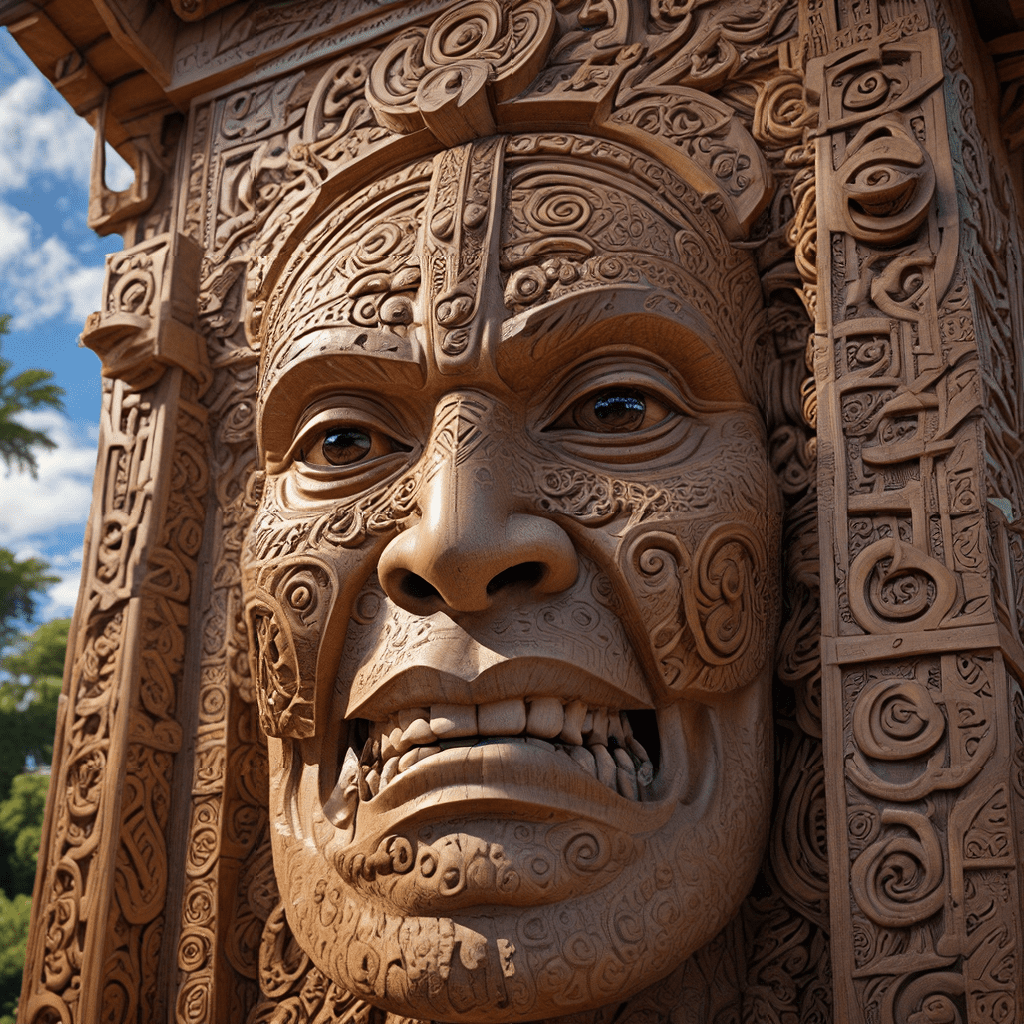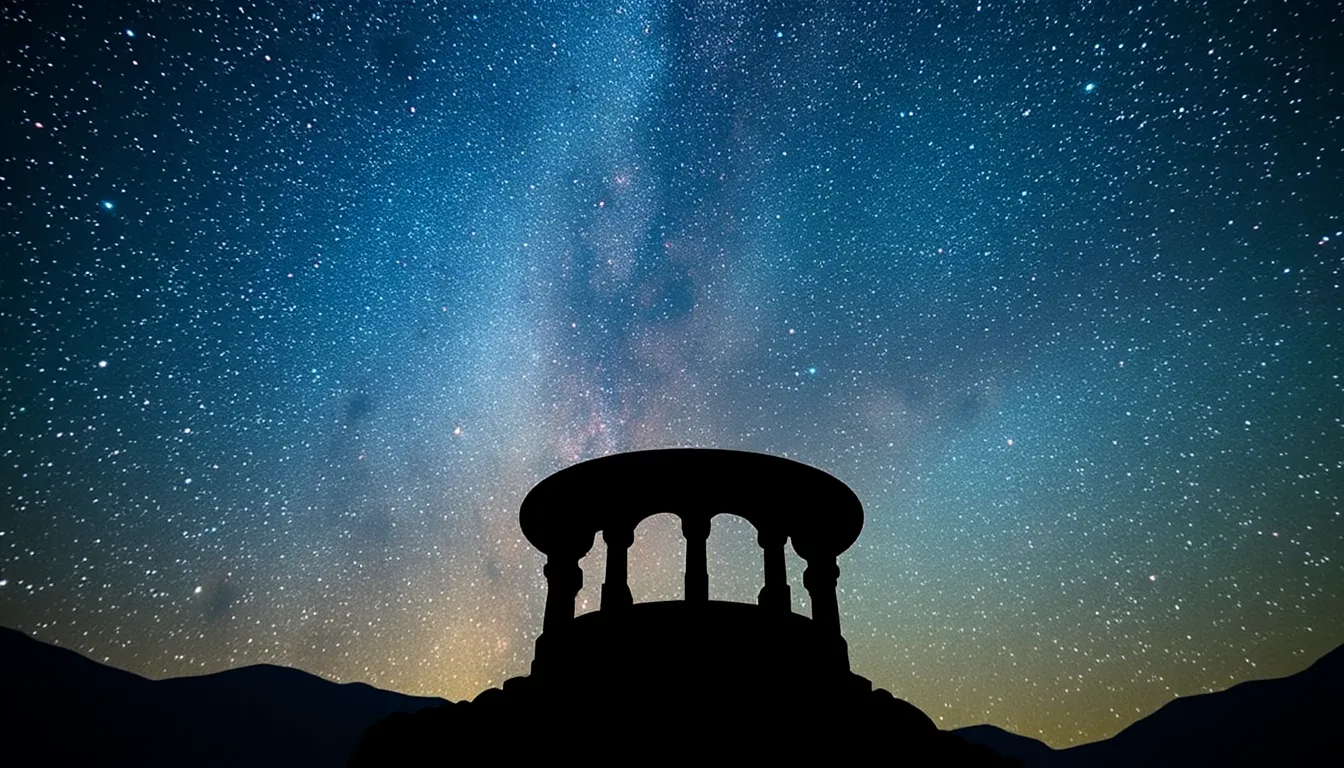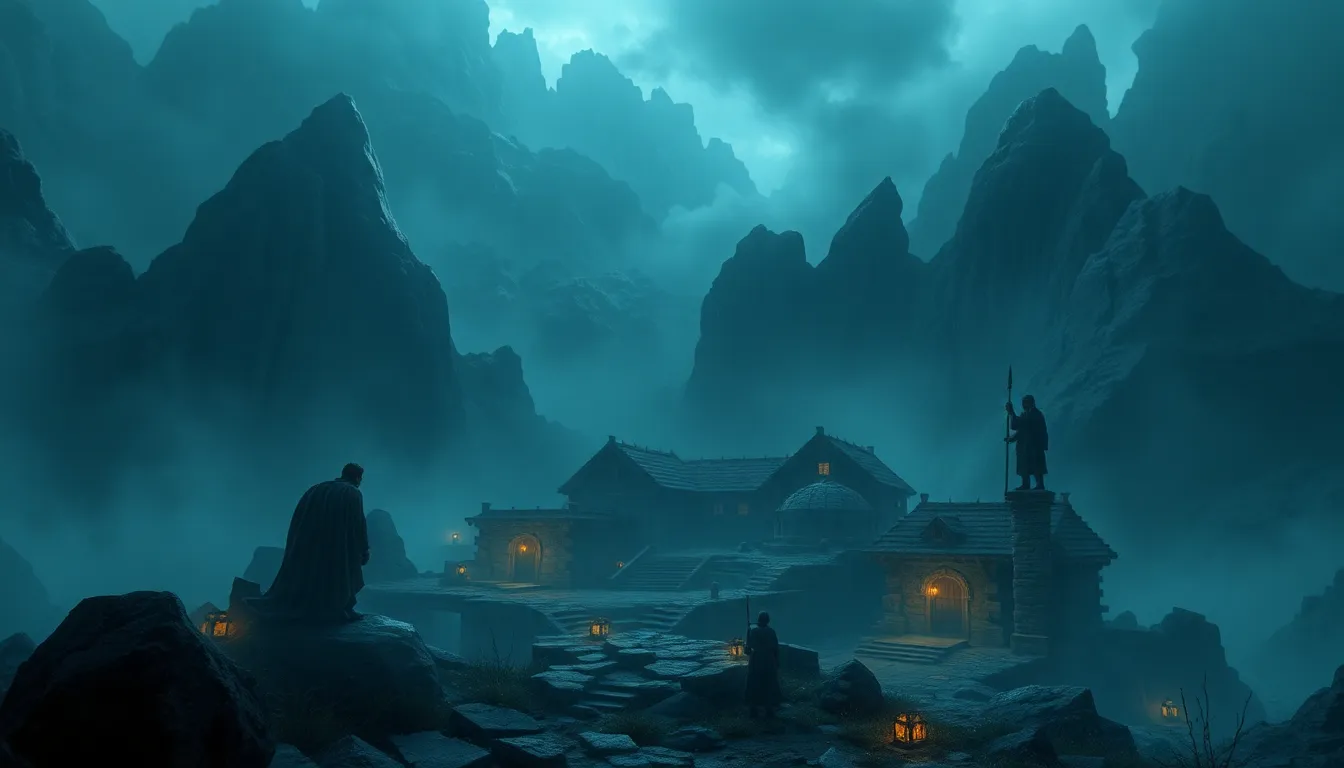The Influence of Maori Mythology on Traditional Maori Architecture
1. The Cosmology of the Maori: A Foundation for Architectural Design
Maori architecture, deeply rooted in the rich tapestry of Maori mythology, reflects a worldview where the physical and spiritual realms are interconnected. The creation myth, known as "Te Kore," explains the origin of the universe. In this myth, the first being, "Te Kore," emerges from nothingness, giving rise to the gods, including Tane, the god of the forest. Tane's role in shaping the world, pushing apart the sky and earth to create space, is reflected in the use of timber as a primary building material in Maori architecture.
The concept of "mauri," meaning "life force," is another crucial element in Maori cosmology. This vital force is believed to reside in all things, including buildings. The design and construction of traditional Maori buildings were intended to harness and maintain "mauri."
Ancestral spirits or "atua" were revered in Maori culture and played a significant role in architecture. Buildings were often designed to honor specific "atua," their presence believed to provide guidance and protection. The presence of "atua" is often seen in the use of carvings and other decorative elements that embody their symbolic language.
2. The Maori Worldview: The Interconnectedness of Nature and Humanity
Maori people lived in harmony with the natural world, viewing themselves as integral parts of an interconnected ecosystem. Mountains, forests, rivers, and the ocean were considered sacred and embodied the "atua" or deities responsible for their existence. These elements were incorporated into architectural designs, reflecting the importance of nature in Maori culture.
The shapes and forms of traditional houses were inspired by natural elements. For example, the "whare puni" or "huts," often resembling a bird's nest, were designed to blend into the natural landscape. The steep roofs of "marae" (meeting places), often resembling the peaks of mountains, symbolized the connection between the earthly realm and the heavens.
The orientation of buildings was also influenced by the natural environment. Buildings were often positioned to align with the rising and setting sun, reflecting the significance of celestial bodies in Maori cosmology.
3. The Importance of Whakapapa: Linking Architecture to Ancestry
"Whakapapa," meaning "genealogy," is a fundamental aspect of Maori culture and played a crucial role in shaping architectural practices. Every individual and structure was linked to a specific lineage, ensuring a continuity of knowledge and values.
Buildings were not merely physical structures but also embodiments of whakapapa, carrying the memories and experiences of ancestors. The ornamentation of buildings, such as carvings, weaving patterns, and the use of specific materials, conveyed lineage and ancestry.
Whakapapa was essential in determining the design and construction of a building, ensuring that it reflected the unique history and cultural identity of the people it served.
4. The Influence of Key Myths and Legends: Inspiration for Architectural Forms
The Maori people trace their ancestry back to the Polynesian islands, where their deities and mythical figures played a significant role in shaping their culture and beliefs. These ancestral figures influenced the design of traditional Maori architecture, inspiring elements and motifs that reflected their stories and powers.
Tane, the god of the forest, is an important figure in Maori mythology. He is credited with shaping the world and providing for its inhabitants. His influence is seen in the use of wood, the primary material in Maori architecture. The intricate carvings that adorn many buildings often depict Tane and his role in creation.
Maui, the demigod known for his feats of strength, wisdom, and trickery, is another powerful figure in Maori mythology. The story of Maui fishing up the North Island of New Zealand is a popular legend and has inspired the design of the "marae." The "marae" is a sacred space, often featuring a large platform that resembles a fishhook, symbolizing Maui's achievement.
5. The Significance of “Marae” (Meeting Places) in Maori Society
"Marae" are sacred spaces that occupy a central place in Maori society, serving as gathering places for ceremonies, meetings, and cultural events. The design and construction of "marae" are imbued with deep spiritual significance, reflecting the importance of maintaining social order and cultural identity.
The architectural features of "marae" are rooted in Maori mythology. The main platform of the "marae" is known as the "tepu" and is considered the most sacred part. The "tepu" is often raised above ground, symbolizing the connection between the earthly realm and the heavens.
The "marae" is surrounded by a series of buildings, including "whare," or houses, which served as communal spaces for sleeping and cooking. The "marae" was not just a physical structure but also a place where people could connect with their ancestors and reaffirm their cultural identity.
6. The Art of Carving: Storytelling Through Wood
Maori carvings, intricately detailed and deeply symbolic, adorn traditional buildings, telling stories of their ancestors and the world around them. The art of carving, known as "whakairo," is a vital part of Maori culture, connecting generations through shared knowledge and symbolism.
Maori carvers used tools made from stone, bone, and shell to create their masterpieces. They employed a variety of techniques, including "whāriki" (weaving patterns), "koru" (spiral shapes), and "manaia" (mythical creatures), to depict ancestral spirits, gods, and stories.
The most common material used in Maori carving is wood. The type of wood chosen reflected the importance of the object being carved. For example, "totara" wood, a strong and durable wood, was often used for building materials, while "kauri" wood, a soft and pliable wood, was used for carving delicate figures.
Carvings found on "marae" often depict important ancestral figures or "atua." These carvings were intended to honor the ancestors and provide a link to the spiritual realm. The "marae" was considered a sacred space where people could connect with their ancestors and reaffirm their cultural identity.
7. The Language of Weaving: Threads of Tradition
Weaving, like carving, is a highly skilled art form that plays a significant role in Maori culture. Maori weavers use natural fibers, such as flax, wool, and feathers, to create intricate patterns, telling stories of their ancestors, gods, and the natural world.
Woven objects, such as "keke" (woven mats), "korowai" (cloaks), and "piupiu" (skirts), were essential items in traditional Maori society. They served not only as clothing and bedding but also as symbols of status, power, and identity.
Weaving patterns were often based on natural forms, such as the spiral shape of the "koru" (fern frond) or the geometric patterns found in the "whakapapa" (genealogy). The colors used in weaving also held deep symbolic meaning, with each color representing a specific concept or emotion.
Weaving was a deeply spiritual practice, connecting individuals to their ancestors and the natural world. Weaving patterns were passed down through generations, ensuring the continuity of traditional knowledge and cultural identity.
8. The Role of Color: A Spectrum of Meaning
Color plays a significant role in Maori culture, representing various emotions, values, and spiritual beliefs. The colors used in traditional Maori architecture, carvings, and weaving are not just decorative elements but also convey deep symbolic meanings.
Red, often associated with fire and passion, is used in carvings to represent courage, strength, and leadership. Black, symbolizing the earth and the underworld, is used to represent mourning and respect for ancestors. White, representing the sky and purity, is often used in weaving to represent peace and harmony.
The use of color in Maori architecture reinforces the interconnectedness of the natural world and the spiritual realm. For example, the red color of the "tepu" (platform) on the "marae" is meant to symbolize the connection to the earth and the ancestral spirits.
9. The Legacy of Maori Architecture: A Living Tradition
Maori architecture is a testament to the rich cultural heritage and innovative spirit of the Maori people. Despite the challenges of colonization and modernization, Maori architecture continues to evolve and thrive, adapting to contemporary needs while honoring traditional values.
The principles of Maori architecture, such as the importance of "mauri" (life force), "whakapapa" (genealogy), and the interconnectedness of nature and humanity, remain relevant even in the modern world. Modern Maori architects are finding ways to incorporate these principles into contemporary designs, creating buildings that are both functional and culturally significant.
Maori architecture continues to inspire artists, architects, and designers around the world, highlighting the beauty and power of traditional knowledge and cultural expression.
10. The Importance of Preserving Traditional Knowledge
Preserving traditional knowledge, including the knowledge of Maori architecture, is crucial for the survival and well-being of Maori culture. The transmission of this knowledge from one generation to the next ensures the continuity of cultural identity and the preservation of the unique heritage of the Maori people.
Through education, workshops, and community initiatives, Maori communities are working to ensure that the knowledge of traditional architecture is passed on to future generations. The preservation of Maori architecture is not just about protecting buildings but also about safeguarding the cultural values and beliefs that have shaped these structures for centuries.
FAQ:
1. What are some key features of Maori architecture?
- Use of natural materials, such as timber, thatch, and stone.
- Intricate carvings that tell stories of ancestors and the natural world.
- Geometric patterns and symbols that represent cultural values and beliefs.
- Orientation of buildings to align with the natural environment.
2. What is the significance of "marae" in Maori culture?
- Sacred spaces used for gatherings, ceremonies, and cultural events.
- Represent the connection between the living and the ancestors.
- Serve as a focal point for social and cultural life.
3. What is the relationship between Maori mythology and architecture?
- Mythology provides inspiration for architectural forms and designs.
- Ancestral spirits and gods are often depicted in carvings and other decorative elements.
- Buildings are often designed to honor specific deities or ancestral figures.
4. How does Maori architecture reflect the interconnectedness of nature and humanity?
- The design and construction of buildings incorporate natural materials and elements.
- The orientation and placement of buildings are influenced by the natural environment.
- The use of colors and patterns reflects the importance of nature in Maori culture.
5. What is the future of Maori architecture?
- Maori architects are finding ways to incorporate traditional principles into contemporary designs.
- The preservation of traditional knowledge and skills is essential for the future of Maori architecture.
- Maori architecture continues to inspire artists, architects, and designers around the world.




